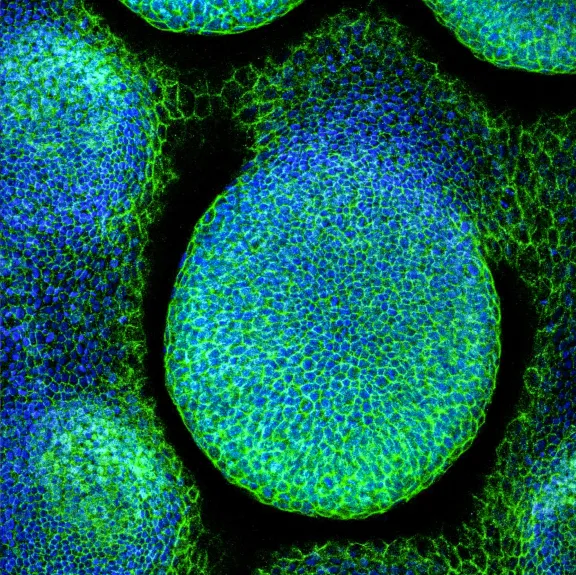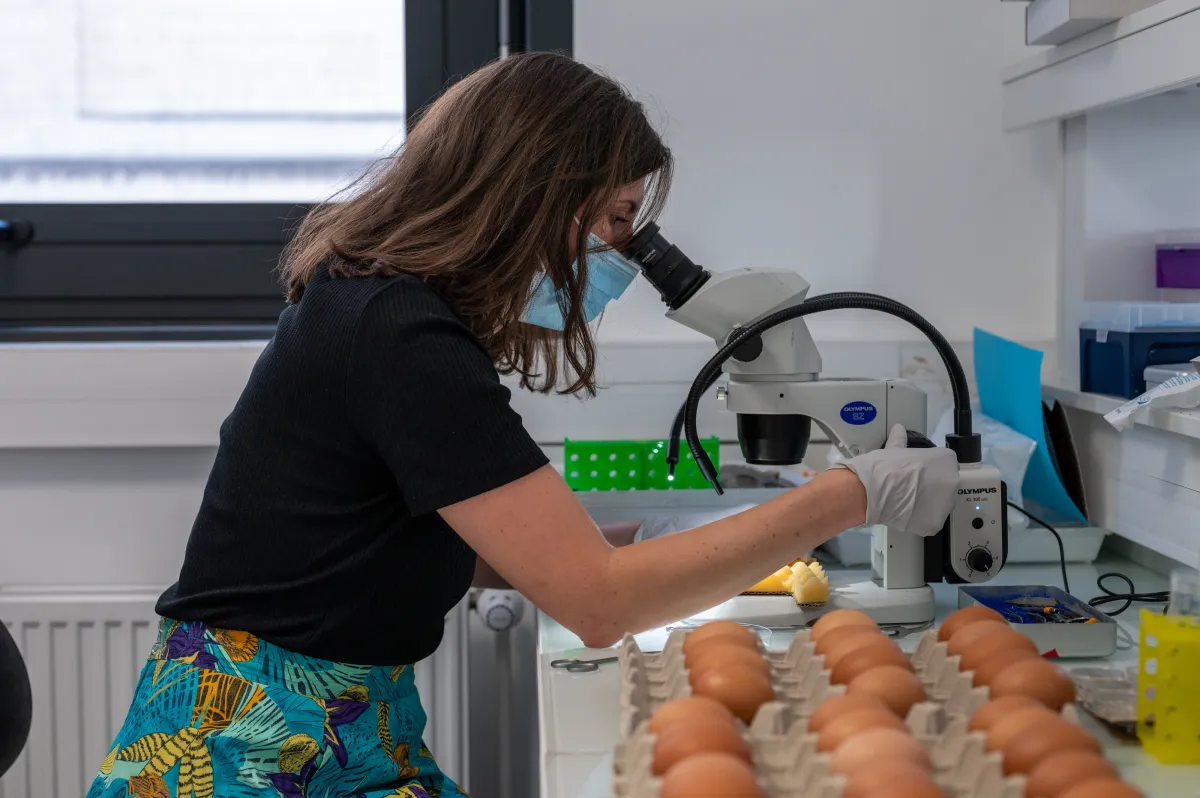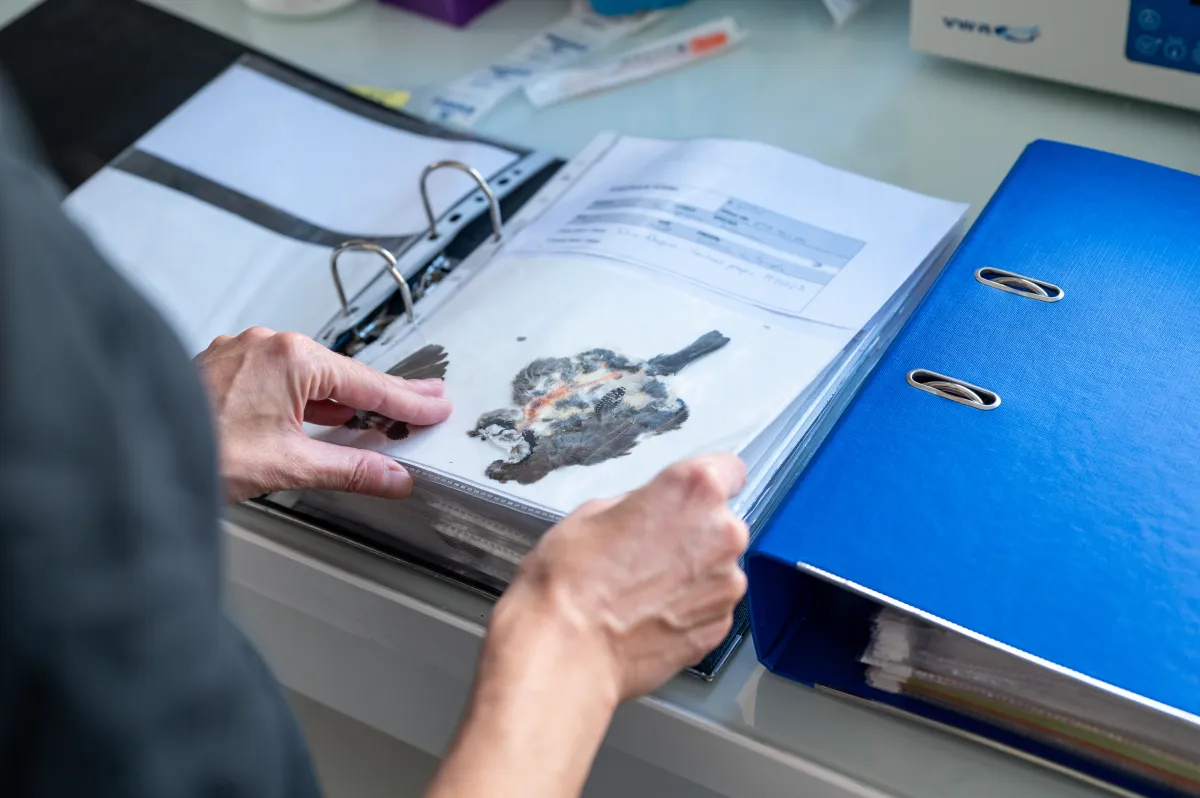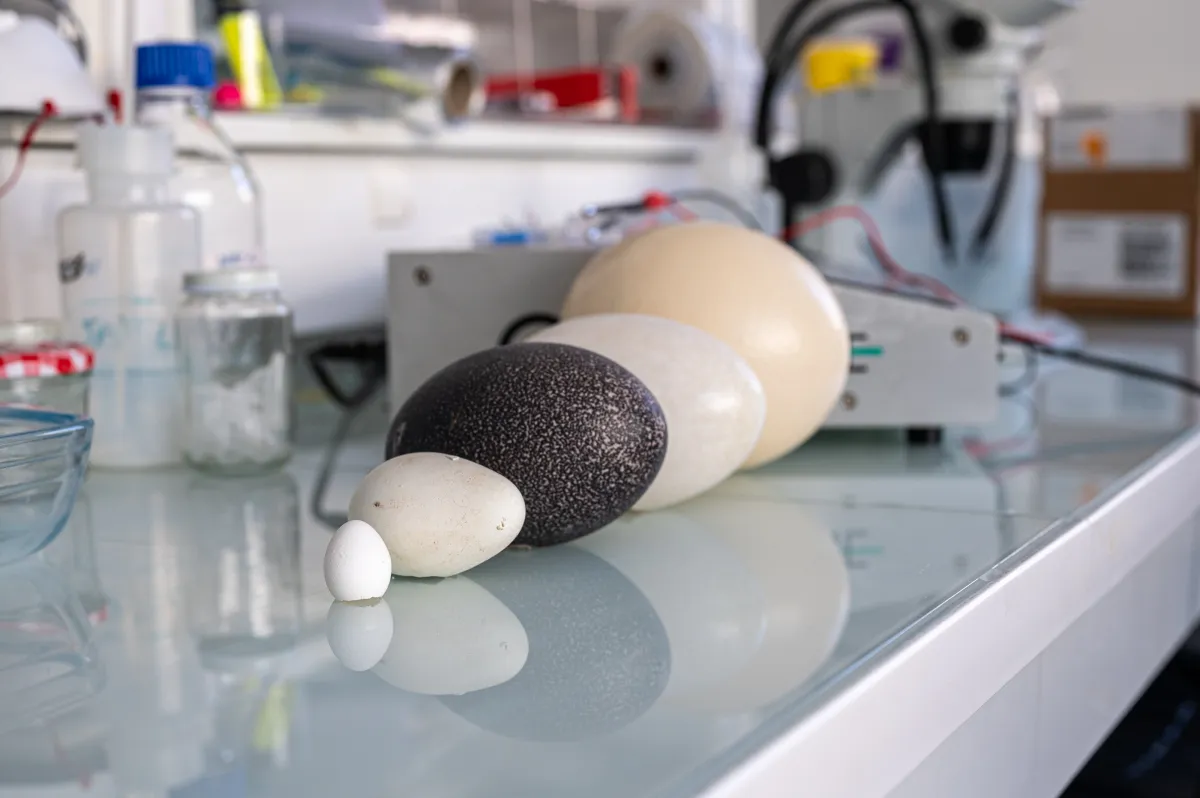Marie Manceau Solving the riddle of bird plumage patterns
Marie Manceau, CNRS research director and developmental biology researcher at the Interdisciplinary Biology Research Center, Collège de France, Paris
- 2020 • Bettencourt Prize Coups d'Élan pour la recherche française



The 2020 Bettencourt Prize Coup d'élan pour la recherche française was awarded to developmental biology researcher Marie Manceau for her work on variations in bird plumage patterns.
Multiple variations of bird plumage
The distribution of pigments, hairs, feathers and scales forms various geometric patterns on the skin of vertebrates. Fields of dots, stripes and polygons are key to the survival of birds, providing flight ability or camouflage. Despite their importance, the mechanisms determining these patterns in the embryo remain a mystery. In the Skin Pattern Formation and Evolution team at the Collège de France, Marie Manceau and her colleagues are developing a trailblazing strategy to study variations between different bird species.With funding from the Bettencourt Prize to Boost French Research, the research team will study plumage patterns. Dr. Manceau and her team aim to describe the geometry formed by the feather buds appearing in the skin, using species as diverse as the quail, chicken, zebra finch, emu, ostrich and gentoo penguin. Mathematical models will be created to theoretically reproduce the dynamics of how these different patterns are determined in the embryo.At the same time, imaging technology will be used to study variations in cellular and biomechanical dynamics in the skin between species. Finding common themes in the variations, modeling them and correlating them to different cell dynamics will help to identify signals that may play a role in the formation of feather bud patterns. Then the signals will be tested directly in the bird, where easy access to the fertilized egg offers vast possibilities for functional studies.The team has already demonstrated this particular method’s effectiveness. Its use in fowl has made it possible to identify the embryonic origin of the periodic color stripes on the plumage of chicks. Beyond these animals, the study, keeping common foundations born of developmental constraints, has shed light on the development of pigment patterns.
The foundation’s support
The Bettencourt Prize to Boost French Research will fund the acquisition of a confocal imaging system to view the cellular dynamics in the skin of avian embryos in real time. This support will consolidate Dr. Manceau and her team’s status as trailblazers in the study of pattern formation through biodiversity.
"Animals’ skin patterns are as diverse as they are ordered, a paradox that fascinates mathematicians and biologists alike!" Marie Manceau
Marie Manceau in a few words
Marie Manceau is a biologist specializing in developmental and evolutionary biology.
During her doctoral research in Professor Marcelle’s laboratory at the Institute of Developmental Biology in Marseille, she focused on the early development of muscle tissue in birds. She found that muscle stem cells, both embryonic and adult, have the same origin. During her post-doctoral fellowship in Prof. Hoekstra's laboratory at Harvard University, she demonstrated that rodent patterns change quickly with embryonic modifications preceding the appearance of pigments.
With funding from the ATIP-Avenir program, in 2013 Dr. Manceau set up an independent research team at the Collège de France Interdisciplinary Biology Research Center under the joint supervision of CNRS and Inserm. In 2015, she joined the CNRS as a junior researcher. She was promoted to research director in 2020.

Bettencourt Prize Coups d'Élan pour la recherche française
The Bettencourt Prize Coups d'Élan pour la recherche française was created by the Foundation in 2000. It has rewarded 78 French laboratories and more than 900 researchers have benefited from this prize. Until 2021, this prize was awarded each year to four research teams, from Inserm and the CNRS Institute of Biological Sciences. The amount of the prize endowment was 250,000 euros per laboratory.
All the award-winners


